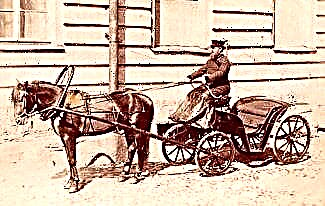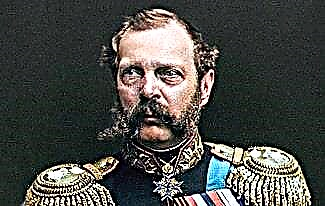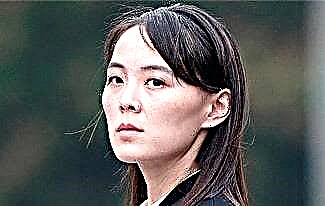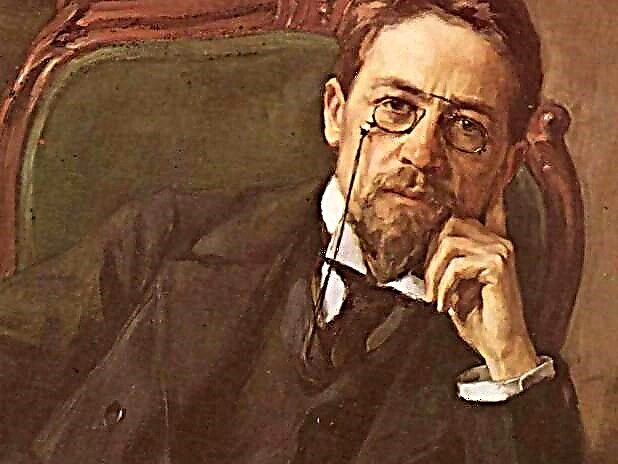In the history of mankind, there are not so many people about whom one can reasonably say: “He changed the world”. Yuri Alekseevich Gagarin (1934 - 1968) was not a ruler of an empire, a military leader or a church dignitary (“Please, do not tell anyone that you have not seen God in space” - Pope John XXIII at a meeting with Gagarin). But the flight of a young Soviet guy into space became a watershed for humanity. Then it seemed that a new era was beginning in the history of mankind. To communicate with Gagarin was considered an honor not only by millions of ordinary people, but also by the powerful of this world: kings and presidents, billionaires and generals.

Unfortunately, only 40 - 50 years after the flight of cosmonaut No. 1, the aspiration of mankind into space has almost disappeared. Satellites are launched, manned flights are performed, but the hearts of millions are touched not by new flights into space, but by new models of iPhones. And yet the feat of Yuri Gagarin, his life and character are forever inscribed in history.
1. The Gagarin family had four children. Yura was the third in seniority. The two elders - Valentina and Zoya - were taken to Germany by the Germans. Both were lucky to return home unharmed, but none of the Gagarins liked to remember the war years.
2. Yura graduated from the seven-year school in Moscow, and then graduated from a technical school in Saratov. And he would have been a metallurgist-foundry, if not for the flying club. Gagarin fell ill with the sky. He finished his studies with excellent marks and managed to fly over 40 hours. A sports guy with such abilities had a direct road to aviation.

3. In the flight school Gagarin, despite excellent grades in all subjects, Yuri was on the verge of expulsion - he could not learn how to accurately land an airplane. It came to the head of the school, Major General Vasily Makarov, and only he realized that Gagarin's small stature (165 cm) prevents him from “feeling” the ground. Everything was fixed by the padding placed on the seat.
4. Gagarin was the first, but not the last cosmonaut to study at the Chkalovsk Aviation School. After him, three more graduates of this institution ascended into space: Valentin Lebedev, Alexander Viktorenko and Yuri Lonchakov.
5. In Orenburg, Yuri found a life partner. 23-year-old pilot and 22-year-old telegraph operator Valentina Goryacheva were married on October 27, 1957. In 1959, their daughter Lena was born. And a month before the flight into space, when the family was already living in the Moscow region, Yuri became a father for the second time - Galina Gagarina was born on March 7, 1961.

6. Whenever possible, Gagarin took his grown-up daughters outside for morning exercises. At the same time, he also called the neighbors' doors, urging them to join. However, the Gagarins lived in a departmental house, and it was not particularly necessary to drive its residents to charge.
7. Valentina Gagarina is now retired. Elena is the head of the Moscow Kremlin Museum-Reserve, Galina is a professor, head of a department at one of the Moscow universities.
8. Gagarin was enrolled in the cosmonaut corps on March 3, and began training on March 30, 1961 - almost exactly one year before the flight into space.

9. Of the six applicants for the title of cosmonaut No. 1, five flew into space sooner or later. Grigory Nelyubin, who received an astronaut's certificate for number 3, was expelled from the squadron for drunkenness and a conflict with the patrol. In 1966, he committed suicide by throwing himself under a train.
10. The main selection criterion was physical development. The astronaut had to be strong, but small - this was required by the dimensions of the spacecraft. Next came psychological stability. Charm, partisanship, and so on were secondary criteria.
11. Yuri Gagarin even before the flight was officially listed as the commander of the cosmonaut corps.
12. The candidacy of the first cosmonaut was selected and approved by a special state commission. But the voting within the cosmonaut corps showed that Gagarin was the most worthy candidate.
13. Difficulties in the implementation of the space program have taught specialists to prepare for the worst possible scenarios when preparing flights. So, for TASS they prepared the texts of three different messages about the flight of Gagarin, and the cosmonaut himself wrote a farewell letter to his wife.

14. During the flight, which lasted an hour and a half, Gagarin had to worry three times, and in the final phase of space travel. At first, the braking system did not reduce the speed to the desired value, and the ship began to rotate rather quickly before entering the atmosphere. Then Gagarin felt uneasy from the sight of the outer shell of the ship burning up in the atmosphere - the metal literally flowed through the windows, and the descent vehicle itself crackled noticeably. Finally, after the ejection, the air inlet valve of the suit did not open - it would be a shame, having flown into space, to suffocate near the Earth itself. But everything worked out - closer to Earth, atmospheric pressure increased, and the valve worked.
15. Gagarin himself reported by phone about his successful landing - the anti-aircraft gunners from the air defense unit, who detected the descent vehicle, did not know about the space flight, and decided to first find out what had fallen, and then report back. Having found the descent vehicle (the cosmonaut and the capsule landed separately), they soon found Gagarin as well. Local residents were the first to find cosmonaut # 1.
16. The area in which the first cosmonaut landed belonged to virgin and fallow lands, therefore Gagarin's first official award was a medal for their development. A tradition was formed according to which many cosmonauts began to be awarded the medal "For the development of virgin and fallow lands".
17. Yuri Levitan, who read the message about Gagarin's flight on the radio, wrote in his memoirs that his emotions were similar to the feelings he experienced on May 9, 1945 - an experienced announcer could hardly hold back tears. It is worth remembering that the war ended just 16 years before Gagarin's flight. Many people remember that when they heard Levitan's voice outside of school hours, they automatically thought: "War!"
18. Before the flight, the management did not think about solemn ceremonies - as they say, there was no time for fat, if the TASS mourning message had been prepared. But on April 12, the announcement of the first space flight caused such an explosion of enthusiasm throughout the country that it was necessary to organize in a hurry both a meeting of Gagarin in Vnukovo and a rally on Red Square. Fortunately, the procedure was worked out during the meetings of foreign delegations.

19. After the flight, the first cosmonaut traveled around almost three dozen countries. Everywhere he was met with an enthusiastic welcome and a rain of awards and souvenirs. During these trips, Gagarin once again proved the correctness of his choice of candidacy. Everywhere he behaved correctly and with dignity, even more charming the people who saw him.

20. In addition to the title of Hero of the Soviet Union, Gagarin received the title of Hero of Labor in Czechoslovakia, Vietnam and Bulgaria. The astronaut also became an honorary citizen of five countries.
21. During Gagarin's trip to India, his motorcade had to stand for more than an hour on the road because of the sacred cow resting right on the way. Hundreds of people were standing along the road, and there was no way to go around the animal. Glancing at his watch again, Gagarin remarked rather gloomily that he circled the Earth faster.
22. Having lost a little form during foreign tours, Gagarin quickly restored it as soon as the prospect of a new space flight appeared. In 1967, he first took off on his own in the MiG-17, and then decided to restore the qualifications of the fighter.
23. Yuri Gagarin made his last flight on March 27, 1968. She and her instructor, Colonel Vladimir Seryogin, performed a regular training flight. Their training MiG crashed in the Vladimir region. According to the official version, the pilots misjudged the height of the clouds and got out of it too close to the ground, without even having time to eject. Gagarin and Sergeev were healthy and sober.
24. After the death of Yuri Gagarin, national mourning was declared in the Soviet Union. At that time, it was the first national mourning in the history of the USSR, declared not in connection with the death of the head of state.
25. In 2011, in commemoration of the 50th anniversary of Yuri Gagarin's flight, the spacecraft was first given a proper name - “Soyuz TMA-21” was named “Gagarin”.










